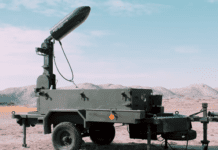This post is also available in:
 עברית (Hebrew)
עברית (Hebrew)
The developing field of quantum computing foretells a future in which current encryption processes are no longer safe. Researchers from the Technical University of Munich are addressing this challenge by developing encryption methods that apply physical laws to prevent the interception of messages.
So how can engineers ensure that data transmitted through the internet can be read only by the intended recipient? Current data encryption uses mathematical methods that rely on the idea that the factorization of large numbers is a difficult task. However, quantum computers are stronger and have greater computing power than traditional computers, so these mathematical codes are no match for them.
According to Techxplore, professor of Quantum Communication Systems Engineering Tobias Vogl is working on an encryption process that relies on principles of physics – the information is encoded into individual light particles before being transmitted, which are thus protected from interception by the laws of physics.
The challenge of this method is transmitting data over long distances. While information in classical communications is encoded in many light particles and transmitted through optical fibers, the information in a single particle cannot be copied so the light signal in this new method cannot be repeatedly amplified, limiting the transmission distance for the information to a few hundred kilometers.
The solution is to use the structure of the atmosphere – the atmosphere is so thin at altitudes higher than 10 kilometers that light is neither scattered nor absorbed, making it possible to use satellites in order to extend quantum communications over longer distances.
The QUICK³ space mission will deploy satellites to safeguard such communications over long distances. Vogl and his team are developing an entire system for this mission, including the components to build a satellite for quantum communications.
While it is yet to be determined whether the technology can withstand outer space conditions, and how the individual system components interact, the satellite launch is currently scheduled for 2025. However, an overarching network for quantum communications will require hundreds or even thousands of satellites.
Due to this process being costly and complicated, it is expected that not all the information in the network will be encrypted in this way – the researchers hypothesize a hybrid network in which data can be encrypted either physically or mathematically. Quantum cryptography is expected to be used as optional for documents requiring special protection.

























